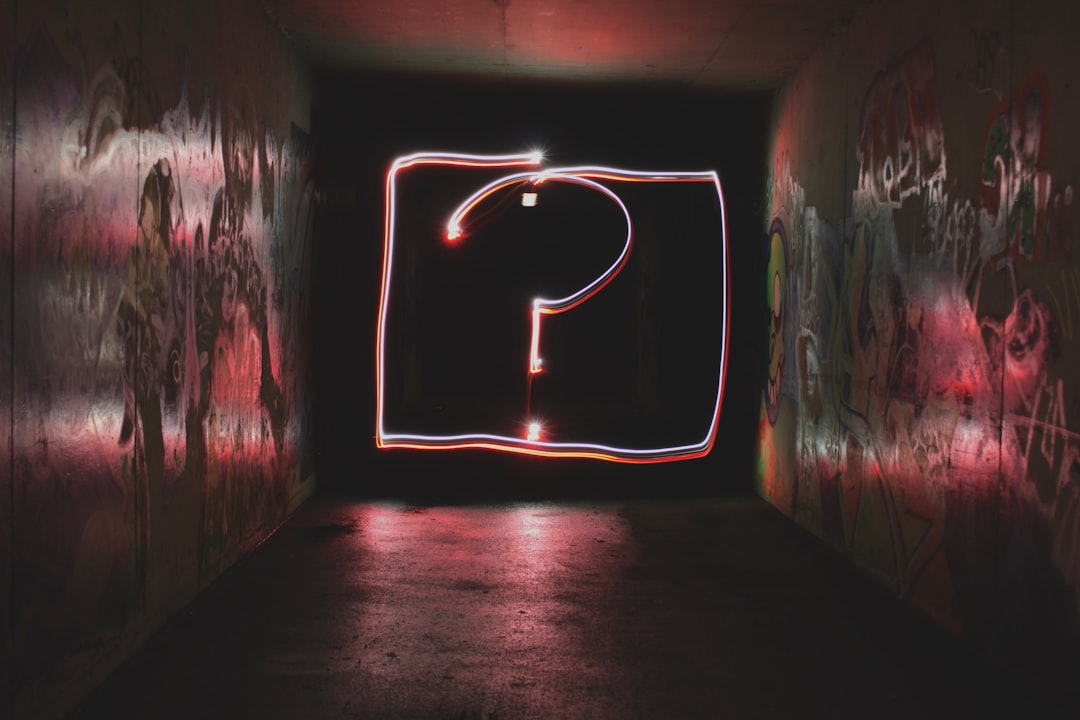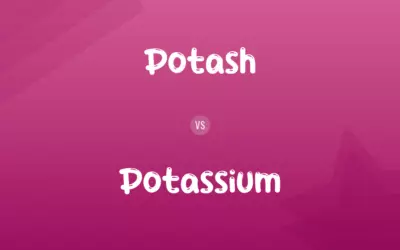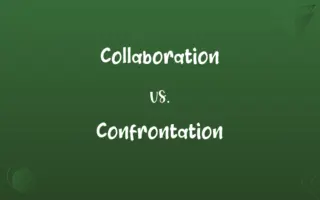Investigation vs. Research
What's the difference.
Investigation and research are both processes that involve gathering information and analyzing data to uncover new insights or solve a problem. However, investigation typically refers to a more focused and specific inquiry into a particular event or situation, often with the goal of uncovering evidence or solving a crime. Research, on the other hand, is a broader and more systematic process of inquiry that aims to expand knowledge in a particular field or answer a specific research question. Both investigation and research require critical thinking, attention to detail, and the use of various methods and tools to gather and analyze information effectively.


Further Detail
Investigation and research are two terms that are often used interchangeably, but they actually have distinct meanings. Investigation refers to the process of examining a specific event, situation, or issue in order to uncover facts and gather evidence. It is typically focused on solving a particular problem or answering a specific question. On the other hand, research is a systematic and methodical process of inquiry that involves gathering, analyzing, and interpreting information to increase knowledge and understanding of a subject.
The purpose of investigation is to gather information that can be used to make decisions, solve problems, or take action. It is often conducted in response to a specific incident or issue, such as a crime or a workplace accident. Research, on the other hand, is more focused on expanding knowledge and advancing understanding in a particular field or discipline. It is driven by a desire to explore new ideas, test hypotheses, and contribute to the existing body of knowledge.
Methodology
Investigation typically involves gathering information through interviews, observations, and document analysis. Investigators may also use tools such as forensic techniques or surveillance to collect evidence. The goal is to uncover the truth and establish the facts of a particular case. Research, on the other hand, is characterized by a more structured and systematic approach. Researchers use a variety of methods, such as experiments, surveys, and case studies, to collect data and test hypotheses. The emphasis is on objectivity, rigor, and reproducibility.
Investigation is often focused on a specific incident, event, or situation. It is typically conducted within a limited time frame and with a specific goal in mind. The scope of investigation is narrow and targeted, with the aim of resolving a particular issue. Research, on the other hand, is broader in scope and more open-ended. It can encompass a wide range of topics and may involve exploring multiple questions or hypotheses. Research projects can vary in size and complexity, from small-scale studies to large-scale research programs.
The outcome of an investigation is typically a report or findings that summarize the evidence collected and the conclusions reached. The findings of an investigation are often used to make decisions, take action, or hold individuals accountable. Research, on the other hand, produces new knowledge and insights that contribute to the existing body of literature in a particular field. The outcome of research is often disseminated through publications, presentations, or conferences, and may lead to further research or applications in practice.
Application
Investigation is commonly used in fields such as law enforcement, journalism, and workplace safety to uncover facts, solve crimes, or investigate incidents. It is a critical tool for gathering evidence and establishing the truth in legal proceedings. Research, on the other hand, is prevalent in academic and scientific settings, where scholars and scientists conduct studies to advance knowledge and understanding in their respective fields. Research is also used in business, healthcare, and other industries to inform decision-making and drive innovation.
While investigation and research share some similarities, such as the use of evidence and the pursuit of knowledge, they are distinct processes with different purposes, methodologies, scopes, outcomes, and applications. Investigation is focused on uncovering facts and solving specific problems, while research is aimed at expanding knowledge and advancing understanding in a particular field. Both investigation and research play important roles in society, contributing to the pursuit of truth, justice, and progress.
Comparisons may contain inaccurate information about people, places, or facts. Please report any issues.

- Misspellings
Investigation vs. Research: Difference and Comparison
Difference Between Investigation and Research
Investigation vs. Research Comparison Chart
Methodology.
Investigation vs. Research Definitions
◉ investigation.
Investigation vs. Research Frequently Asked Questions
How does research contribute to knowledge, what is the primary goal of an investigation, is research limited to scientific fields, what tools are used in investigations.
Can investigation and research overlap?
Do investigations always lead to conclusive results, is publishing a common outcome of research, what methodologies are common in research, are investigations always related to crime, can research lead to technological advancements.

Content Creators
Popular Comparisons

Trending Comparisons

New Comparisons

Investigate vs. Research: What's the Difference?
Key Differences
Comparison chart, basic definition, methodologies, investigate and research definitions, investigate, in which context is "investigate" most commonly used, is "investigate" typically reactive, can "research" be both qualitative and quantitative, does an "investigation" always result in a conclusive answer, can a journalist "research" and "investigate" simultaneously, is "investigate" limited to crime scenes, can "research" be done on a historical event, what's the main aim of "research" in academia, what tools might a scientist use for "research", which word is more proactive: "research" or "investigate", can a business "research" market trends, which term is more likely associated with experimentation, in what situation might an auditor "investigate", can "investigate" imply an official capacity, which term is broader in its scope of inquiry.

Trending Comparisons

Popular Comparisons

New Comparisons

Investigation vs. Research: Know the Difference
Key Differences
Comparison Chart
Ethical considerations, investigation and research definitions, investigation, repeatedly asked queries, what drives research, what is the primary goal of an investigation, what is a hypothesis in research, what ethical considerations are important in research, how does investigation differ from research in methodology, can research lead to new theories or concepts, are investigations confidential, is the outcome of an investigation always conclusive, can investigation involve research techniques, how is the success of research measured, what is the focus of investigation, is investigation always conducted by law enforcement, can investigations be biased, can investigations lead to legal actions, is prior knowledge necessary for conducting research, are investigations always related to criminal activities, can research be interdisciplinary, what role does peer review play in research, what is the role of experimentation in research, are findings from investigations always made public, share this page.

Popular Comparisons

Trending Comparisons

Featured Comparisons

New Comparisons

- Subscriber Services
- For Authors
- Publications
- Archaeology
- Art & Architecture
- Bilingual dictionaries
- Classical studies
- Encyclopedias
- English Dictionaries and Thesauri
- Language reference
- Linguistics
- Media studies
- Medicine and health
- Names studies
- Performing arts
- Science and technology
- Social sciences
- Society and culture
- Overview Pages
- Subject Reference
- English Dictionaries
- Bilingual Dictionaries
Recently viewed (0)
- Save Search
- Share This Facebook LinkedIn Twitter
Related Content
More like this.
Show all results sharing these subjects:
investigative research
Quick reference.
Research aimed at revealing the underlying power relations between subjects and those over whom they have influence or control, or illuminating the often undeclared interests of individuals in powerful organizations and institutions. Investigative research in social science shares features with investigative journalism. A pioneering rationale for investigative research in sociology was provided by Californian sociologist Jack Douglas. The frontispiece to Douglas's book on investigative research (Douglas, 1976) is a quote from Thucydides' The Peloponnesian War: ‘Not that even so the truth was easy to discover: different eye witnesses give different accounts of the same events, speaking out of partiality for one side or the other or else from imperfect memories.’ Here Douglas turns to classical literature to reaffirm an ancient interpretive principle—and the important word in the quotation is not so much ‘different’ or ‘imperfect’, but ‘partiality’. For Douglas:using basic ideas of truth, we find that the social world in which we live, especially American society, is a complex, conflictual, and problematic world in which people, both unintentionally and purposefully, often (but not always) construct complex ways of hiding important parts of their lives from the outside public, especially researchers. Social research methods must always be constructed in accord with the basic ideas of truth and the basic goal of achieving truth in this kind of social world. (1976: 3).Within Douglas's investigative framework, then, there is no absolute truth, rather a ‘multiperspectival conception of truth’. And it is not to scientific methods and replicatable techniques that the investigative Douglas turns in his quest for such truths:Only a tiny fraction of the information collected and social research done in our society is collected or done by sociologists or by people who have seriously studied sociology. Most social research information is discovered by social research done by people of practical affairs, such as journalists collecting information through interviews, writers doing life stories by taping long talks with the subjects, retired politicians writing memoirs or publishing diaries, businessmen trying to determine the profitability of a new housing development or a new toothpaste, government officials trying to determine public response to a new schedule of bus fares or the amount of crime, and so on almost endlessly. (1976: 14).This is not a programme for systematic research methods training in graduate schools of social science (Sugden and Tomlinson, 1999). It is, though, a realistic appraisal of the nature of knowledge generation in advanced liberal democratic consumerist societies. And Douglas's arguments lie within a well-established critical tradition in North American cultural criticism, journalism, and campaigning sociology (and comparable streams of critical oppositional and investigative traditions in other countries). The roots of the investigative tradition lie within the muckraking tradition of journalistic writing in the USA in the first decade of the 20th century, when ‘investigation and exposure, watchdog functions of a democratic press’ (Kaplan, 1975: 151) characterized the investigations and writings of a generation of journalists—and novelists such as Upton Sinclair—who prompted reform and intervention by the federal government in the ruthless and exploitative practices of giant industries. Insurance companies, railroads, the liquor business, and the medicine and meat industries were all exposed, and opened up to the reforming regulatory zeal of the US president, Theodore Roosevelt. Lincoln Steffens, from 1901 editing the McClure's Magazine (monthly circulation 360,000), was the most prominent of such journalists, ‘the publicly recognized leader of a movement that was at the peak of its influence at the beginning of 1906’ (Kaplan, 1975: 146). The investigative muckraking tradition was later complemented by a radical strain of critical writing best embodied in the figure of Randolph Bourne. Bourne's essays for the New Republic from 1914 included ‘The Undergraduate’, in which he bemoaned the fraternity-dominated college life based on a ‘sporting attitude’ which is anathema to an intellectual, enquiring life (Bourne, 1977: 212–15).
From: investigative research in A Dictionary of Sports Studies »
Subjects: Social sciences — Sociology
Related content in Oxford Reference
Reference entries.
View all related items in Oxford Reference »
Search for: 'investigative research' in Oxford Reference »
- Oxford University Press
PRINTED FROM OXFORD REFERENCE (www.oxfordreference.com). (c) Copyright Oxford University Press, 2023. All Rights Reserved. Under the terms of the licence agreement, an individual user may print out a PDF of a single entry from a reference work in OR for personal use (for details see Privacy Policy and Legal Notice ).
date: 03 April 2024
- Cookie Policy
- Privacy Policy
- Legal Notice
- Accessibility
- [66.249.64.20|185.80.151.9]
- 185.80.151.9
Character limit 500 /500
Research: Meaning and Purpose
- First Online: 27 October 2022
Cite this chapter

- Kazi Abusaleh 4 &
- Akib Bin Anwar 5
2033 Accesses
The objective of the chapter is to provide the conceptual framework of the research and research process and draw the importance of research in social sciences. Various books and research papers were reviewed to write the chapter. The chapter defines ‘research’ as a deliberate and systematic scientific investigation into a phenomenon to explore, analyse, and predict about the issues or circumstances, and characterizes ‘research’ as a systematic and scientific mode of inquiry, a way to testify the existing knowledge and theories, and a well-designed process to answer questions in a reliable and unbiased way. This chapter, however, categorizes research into eight types under four headings, explains six steps to carry out a research work scientifically, and finally sketches the importance of research in social sciences.
- Research process
- Social science
- Systematic scientific investigation
This is a preview of subscription content, log in via an institution to check access.
Access this chapter
- Available as PDF
- Read on any device
- Instant download
- Own it forever
- Available as EPUB and PDF
- Compact, lightweight edition
- Dispatched in 3 to 5 business days
- Free shipping worldwide - see info
- Durable hardcover edition
Tax calculation will be finalised at checkout
Purchases are for personal use only
Institutional subscriptions
Adams, G. R., & Schvaneveldt, J. D. (1991). Understanding research methods . Addison-Wesley Longman Ltd.
Google Scholar
Adams, G., & Schvaneveldt, J. (1985). Obtaining Data: Questionnaire and Interview. Understanding research methods (pp. 199–229). Longman.
Adams, S. (1975). Evaluative research in corrections: A practical guide. US Department of Justice, Law Enforcement Assistance Administration, National Institute of Law Enforcement and Criminal Justice.
Aminuzzaman, S. M. (1991). Introduction to social research . Bangladesh publishers.
Ary, D., Jacobs, L. C., & Sorensen, C. K. (2010). Introduction to research in education (8th ed.). Wardsworth.
Best, J. W., & Kahn, J. V. (1986). Research in education (5th ed.). Prentice Hall.
Bhattacherjee, A. (2012). Social science research: Principles, methods, and practices . University of South Florida.
Black, T. R. (1993). Evaluating social science research: An introduction . Sage.
Borg, W. R., & Gall, M. D. (1963). Educational research: An introduction . David McKay Company.
Burns, A. C. (2006). Marketing research. Pearson Education.
Connaway, L. S., & Powell, R. R. (2010). Basic research methods for librarians . ABC-CLIO.
Cresswell, J. W. (2008). Educational research: Planning, conducting and evaluating qualitative and quantitative research (4th ed.). Merrill & Prentice Hall.
Gebremedhin, T. G., & Tweeten, L. G. (1994). Research methods and communication in the social sciences . ABC-CLIO.
Ghosh, B. N. (1985). Scientific method and social research . Stwiling Publishers/Advent Books Division.
Given, L. M. (Ed.). (2008). The Sage encyclopaedia of qualitative research methods . Sage publications.
Greenwood, D. J., & Levin, M. (2007). Introduction to action research: Social research for social change (2 nd ed.). SAGE publications.
Herr, K., & Anderson, G. L. (2014). The action research dissertation: A guide for students and faculty . Sage publications.
Kerlinger, F. N. (1964). Foundation behavioural approach . Rinehart & Winston.
Kothari, C. R. (2004). Research methodology: Methods and techniques . New Age International (P) Limited Publishers.
Kumar, R. (2011). Selecting a method of data collection’. Research methodology: a step by step guide for beginners (3 rd ed.). Sage.
Leedy, P. D. (1981). How to read research and understand it . Macmillan.
Leedy, P. D., & Ormrod, J. E. (2015). Practical research: planning and design (11th ed.). Global Edition.
Merriam-Webster Online Dictionary (2020). Merriam-Webster. Retrieved April 25, 2020 from www.merriam-webster.com/dictionary/research
Mishra, D. S. (2017). Handbook of research methodology: A Compendium for scholars & researchers . Educreation Publishing.
Narayana, P. S., Varalakshmi, D., Pullaiah, T., & Rao, K. S. (2018). Research methodology in Zoology. Scientific Publishers.
Oxford Learner’s Online Dictionaries (2020). Oxford University Press. Retrieved April 25, 2020 from www.oxfordlearnersdictionaries.com/definition/english/research_1?q=research
Polansky, N. A. (Ed.). (1960). Social work research: methods for the helping professions . University of Chicago Press.
Selltiz, C., Wrightsman, L. S., & Cook, S. W. (1976). Research methods in social relations . Holt.
Smith, V. H. (1998). Measuring the benefits of social science research (Vol. 2, pp. 01–21). International Food Policy Research Institute.
Somekh, B., & Lewin, C. (2004). Research Methods in the Social Sciences . Sage Publications.
Suchman, E. (1968). Evaluative Research: Principles and Practice in Public Service and Social Action Programs . Russell Sage Foundation.
Download references
Author information
Authors and affiliations.
Transparency International Bangladesh (TIB), Dhanmondi, Dhaka, 1209, Bangladesh
Kazi Abusaleh
Community Mobilization Manager, Winrock International, Dhaka, 1212, Bangladesh
Akib Bin Anwar
You can also search for this author in PubMed Google Scholar
Corresponding author
Correspondence to Kazi Abusaleh .
Editor information
Editors and affiliations.
Centre for Family and Child Studies, Research Institute of Humanities and Social Sciences, University of Sharjah, Sharjah, United Arab Emirates
M. Rezaul Islam
Department of Development Studies, University of Dhaka, Dhaka, Bangladesh
Niaz Ahmed Khan
Department of Social Work, School of Humanities, University of Johannesburg, Johannesburg, South Africa
Rajendra Baikady
Rights and permissions
Reprints and permissions
Copyright information
© 2022 The Author(s), under exclusive license to Springer Nature Singapore Pte Ltd.
About this chapter
Abusaleh, K., Anwar, A.B. (2022). Research: Meaning and Purpose. In: Islam, M.R., Khan, N.A., Baikady, R. (eds) Principles of Social Research Methodology. Springer, Singapore. https://doi.org/10.1007/978-981-19-5441-2_2
Download citation
DOI : https://doi.org/10.1007/978-981-19-5441-2_2
Published : 27 October 2022
Publisher Name : Springer, Singapore
Print ISBN : 978-981-19-5219-7
Online ISBN : 978-981-19-5441-2
eBook Packages : Social Sciences
Share this chapter
Anyone you share the following link with will be able to read this content:
Sorry, a shareable link is not currently available for this article.
Provided by the Springer Nature SharedIt content-sharing initiative
- Publish with us
Policies and ethics
- Find a journal
- Track your research

Investigate vs. Research — What's the Difference?
Difference Between Investigate and Research
Table of contents, key differences, comparison chart, primary purpose, common contexts, methodologies, compare with definitions, investigate, common curiosities, can "research" be done on a single topic, is "research" always scientific, can a student "investigate" a topic for a project, if i'm looking into a company's history, am i investigating or researching, does "investigate" always relate to crime, do researchers always reach a conclusion, is an "investigation" always reactive, are all investigations formal, can one "investigate" a rumor, can you "research" a person, do investigations always lead to discoveries, is all research published, is every investigation research, are investigative journalists also researchers, can "research" be subjective, share your discovery.

Author Spotlight
Popular Comparisons

Trending Comparisons

New Comparisons

Trending Terms

Connect the digital thread with the best AI-powered search for manufacturers Watch the demo
See what we're all about.
Our mission is your mission.
Leadership Team
Get to know us.
Discover what makes life at Sinequa so unique.
Find your new favorite job.
Get the latest Sinequa news.
The partners that give rise to innovative solution.
Innovation from the inside out.
See the leading, global companies that trust Sinequa.
Customer stories
The proof that's in the pudding.
- Why Sinequa?
Sinequa’s not just another search company.
AI-powered solutions built for your industry.
- Healthcare + Life Sciences
Discover your next breakthrough.
- Manufacturing
Connect your digital thread.
- Financial Services
Time is money. Invest in your people.
Surface fast and actionable insights.
- Government + Defense
Find your mission.
Knowledge is power.
Unlock the power of your workforce.
We'd love to meet with you at our events around the world.
Unique insights on knowledge management, AI and more.
- Assets Library
Explore our white papers, videos, case studies, and so much more.
Centralized access to Sinequa and your peers.
- Sinequa University
Access on-demand trainings and level up your skills.
Your workplace reimagined.
- Product Overview
Power what’s possible with the leading AI-powered search platform.
- Workplace Search
Your company’s knowledge is just a search away.
Connect your apps, connect your workplace.
Advanced features available out of the box.
- Sinequa Assistant
Unleash the power of enterprise-ready GenAI.
Built-in security. Trusted by the world's most secure organizations.
- Key Features
- Our Connectors
- Connectors List
- Search Cloud Platform
- Sinequa for Azure
- Customer Stories
- Our Leadership Team
- Job Listing
Home / Resources / Blog / Investigative research: Definition & Process
- Enterprise Search
Investigative research: Definition & Process
Posted by Charlotte Foglia

Digging up relevant information about a subject from a collection of data is a skill required in many fields. From investigative journalism to criminal investigation, finding a coherent story from seemingly unrelated data plays a considerable role in many activities. And this is where investigative research comes into play. Let’s have a look at what it is.
What is investigative research?
Investigative research is used to describe various methods and tools for finding information about a specific subject or incident which may not be apparent. The process also includes searching for relevant data which may not be readily available. Investigative research is used for everything from thwarting terrorist activities to finding money laundering. In a business setting, these tools may help you do market research , understand bottlenecks, or anything affecting the revenue stream.
In the age of information, the nature of research has changed quite a lot. Be it academic papers on cancer or an article about data analysis, there’s no shortage of available data. The difference is going through all of this data to find the information we need.
Most of the information is unstructured (up to 90%) , in the form of emails, chats, or other formats, and traditional tools can’t handle this. Another major roadblock is the data silos that exist in many organizations. It’s tough to connect data that exists in many sources and build a clear picture. In a survey conducted across eight countries with 131 decision-makers , 85% of respondents found it difficult to access information.
Let’s discuss tools that can help decision-makers conduct investigative research efficiently and effectively.
Major tools for data investigation
Researchers have plenty of tools and resources available for diving deep into the data and unearthing hidden facts and stories. Around 21% of decision-makers in IT, from the above study, wanted IT solutions that would let their team work on higher-value assignments . They wanted to automate more straightforward or repetitive tasks.
Here are a few tools that will help an investigative team do just that.
Data sources
If you’re investigating with your data, this may not be entirely relevant for you. But even if the organization has plenty of data, you may need to connect with other data sources, such as the value of currencies on a specific date, to come to conclusions.
Doing a simple Google search may give you a lot of data, but you may have to dive a bit deeper if you want more. These tools can help you here.
Google Public Data Explorer
This tool is entirely free to use and works more or less like google search. You can search across a wide range of data sets available publicly. Google Public Data Explorer also has good visualizations and is highly intuitive to use. You can also upload your datasets for easy visualization.
Dataportals.org
Dataportals.org is a list of websites where you can access public data. Most of them are government websites or data portals, but you can also find websites with data related to businesses and other fields. The website is free to use.
Data analysis (or finding the information from the data)
Once you have the data, the next thing is to find patterns and trends from this. While structured data is relatively easy to analyze and find patterns in, things get complicated with unstructured data. And a huge chunk of data, particularly in criminal investigations or audits, is unstructured.
This means going through tons of emails, chats, other communications, and more to find what you’re looking for. The good thing is that we now have the tools for that.
Sinequa Enterprise Search
Sinequa’s enterprise search solution can help you significantly reduce the resources for investigative research. It comes with hundreds of pre-built connectors to data sources. Sinequa can help you quickly find what you’re looking for from tons of unstructured data. The system uses cutting-edge AI and natural language processing to derive answers to your questions. Recently a leading financial intelligence unit successfully used Sinequa’s solution to counter money laundering activities .
Sinequa can help you quickly find what you’re looking for from tons of unstructured data. The system uses cutting-edge AI and natural language processing to derive answers to your questions. Recently a leading financial intelligence unit successfully used Sinequa’s solution to counter money laundering activities .
Sinequa’s enterprise search can significantly accelerate investigative research. During most investigations, data comes from multiple sources. By presenting a complete view of every case or subject under investigation , Sinequa helps researchers quickly reach their conclusions.
By combining Natural Language Processing and Machine Learning, Sinequa offers a constantly adapting strategy for the changing scenario. For example, in the case of financial crimes, the perpetrators are constantly coming up with methods to overcome rule-based solutions . But the Sinequa system is continually learning from new data sets. This makes it capable of finding fraudulent transactions that would otherwise go undetected or take significant resources to prevent.
Investigation process
Investigation processes vary according to the specific type of investigation. The process for a criminal investigation won’t be the same as an investigation into unexpected revenue loss. But we can develop a general process flow for finding answers to a question.
1. Define the question
This is the first step in any investigation. Before the investigation proceeds further, you have to define the entire scope of the investigation. What do you need to find, where are you going to look, what are the resources available, who are the stakeholders, etc. Of course, sometimes, new information that broadens the scope may reveal itself throughout an investigation.
2. Collect the data
This is where you collect all the data about the matter. This could be telephone records, chats, emails, credit card histories, bank statements, and more. The nature of the investigation will dictate the type of collected data. In some cases, the evidence may be purely digital, while in some, it could include DNA, witness testimonies, and other forms of data.
3. Filter the noise
In a corpus of data, there will be a lot of noise. For example, let’s say you have all the emails between employees of an organization to investigate defrauding the shareholders. The collection will have birthday and anniversary greetings, gossip between the employees, spam emails, and more, which have nothing to do with your investigation. Same goes for call records, bank statements, or any data collection.
You can also filter out the data based on the time, and in some cases, even based on geographic locations. Particularly in criminal investigations, location-based filters can uncover critical insights.
After all the filters are applied, you may validate a subset of raw data to make it a bit more authoritative and reliable.

4. Find the connections
Find how different entities are connected, any communication between them, and determine which entities are involved in the case. For example, if you’re investigating the call records or communications of a terrorist cell, try to figure how they’re connected, how and what they’re planning, and who are all connected to them.
If you’re trying to figure out a conspiracy to commit financial crimes, connect who all are communicating with whom and what they’re planning to do. The frequency and content of communication can tell you these relationships.
5. Expand on the connections and build a timeline of events
Build up a timeline of how everything started, showcasing every turning point. A timeline will give everyone a clear picture of what happened. It will also help you figure out what’s missing in your investigation.
Latest Blog Posts

Uncover the Power of Generative AI and Enterprise Search for Drug Discovery
- Artificial Intelligence (AI)

Optimizing Manufacturing Workflows with Retrieval-Augmented Generation (RAG) and Enterprise Search

Maximizing ROI: How Retrieval-Augmented Generation (RAG) Impacts Enterprise Search Strategies

Make sure you understand every word you hear on All Ears English.
Bring your English to the advanced level with new vocabulary and natural expressions.
Subscribe and get the transcripts delivered by email.
Learn to speak naturally with the American accent.
Click here to subscribe and save 50%
Today we have a really great question from a listener that you have probably wondered about yourself.
Hi ladies, I enjoy your show, and I learn a lot! I am wondering if you can help me to understand a couple of words that I hear used often. I am wondering about the use of the words “research” and “investigation.” Could you use them as verbs? I am just a little confused in this area. Thank you for your help, Laura_150390
Start By Understanding The Differences
These are words that you may tend to hear used often, so let’s start by talking about the differences between these two words.
Looking at the word “research”, it can be used as either a noun or a verb.
The word “investigate” can be used as a verb, while investigation would be the noun version.
Their meanings are very similar, and so it’s easy to see how this can be a confusing area.
Often times you can use them as synonyms, but there are some differences that you want to be aware of.
- To research something : This is more general and it may be used often in academia. You are likely to be gathering a lot of information in this type of situation.
- To investigate something : Here you are likelylooking for one answer, maybe a specific piece of truth of some kind. This term is used often in crime shows.
So you can start to get a feel for how each one of these works, and the differences are starting to show up more easily.
The key to using these correctly is to see what the differences are, and then pick which one fits the situation.
Looking At Examples of Each
Let’s look at a couple of examples of each so that you can get a good understanding.
Since you can use them in various ways, let’s start by looking at these words when they are used as verbs.
- “I need to research the neighborhoods in Tennessee so I know where I should move.”
- “Why did she leave early last night? I need to investigate!”
- “I am researching women in the workplace from the 1990s on…”
- “Let’s investigate the impact of wealth on the retail business.”
So you can see that they are very similar, but investigate tends to be more serious in nature.
Now let’s take a look at these if they are used as nouns, which is just as common in terms of usage.
- “I’m conducting research on company organization practices.”
- “I need to see the research in order to come to a conclusion.”
- “They launched an investigation into his spending habits.”
- “The detectives found the murderer through a long investigation.”
Do you say investigate about or research about?
You wouldn’t say investigate about, but you would say investigate something.
You could say something like “Let’s investigate the situation” or “Let’s investigate and find the answer!”
You could even say something like “We need to investigate this further.”
You can count on likely hearing is “research on (subject)”, “research in (field)”, and “research into (issue).”
You can say “investigation of” or “investigation into.”
These are very close, and they will be likely used interchangeably though you know now the correct usage.
It’s All About The Context
In general, think of the context!
If you are watching a crime show, you’d probably say investigate.
If you are in the library you would probably say research.
Overall, you may tend to think of research as the more common one.
Let’s look at some general contexts so that you can see how this can work in your conversations.
- Finding a house: You will likely research the neighborhoods.
- Finding the specific answer to a problem: You will likely investigate to find that solution.
- You would tend to research movie times.
- You may investigate a situation, like for example a fight someone was in.
You may also use other words and phrases in this area such as look into, get to the bottom of something, find out, and explore.
What you want to know is that these words are so similar.
We gave you the basic and most important difference today.
They are both used in conversation, and so you want to practice using them to get used to them.
Try these out and see how you can build confidence and choose the one taht is right for your conversation.
If you have any questions, please leave them below in the comments section.
We’ll get back to you as soon as we can.
Related Posts
- English Vocabulary
Business English 234: Multitude or Plethora? What Are Quantifiers and Why Do They Matter?
- Business English
Business English 233: Make These Tweaks to Your Business English Vocabulary
- Grammar Tenses
- English Grammar
BE 232: Will or Going to? Your Future Grammar Questions Answered

Privacy Overview
Have a language expert improve your writing
Run a free plagiarism check in 10 minutes, generate accurate citations for free.
- Knowledge Base
Methodology
- What Is a Research Design | Types, Guide & Examples
What Is a Research Design | Types, Guide & Examples
Published on June 7, 2021 by Shona McCombes . Revised on November 20, 2023 by Pritha Bhandari.
A research design is a strategy for answering your research question using empirical data. Creating a research design means making decisions about:
- Your overall research objectives and approach
- Whether you’ll rely on primary research or secondary research
- Your sampling methods or criteria for selecting subjects
- Your data collection methods
- The procedures you’ll follow to collect data
- Your data analysis methods
A well-planned research design helps ensure that your methods match your research objectives and that you use the right kind of analysis for your data.
Table of contents
Step 1: consider your aims and approach, step 2: choose a type of research design, step 3: identify your population and sampling method, step 4: choose your data collection methods, step 5: plan your data collection procedures, step 6: decide on your data analysis strategies, other interesting articles, frequently asked questions about research design.
- Introduction
Before you can start designing your research, you should already have a clear idea of the research question you want to investigate.
There are many different ways you could go about answering this question. Your research design choices should be driven by your aims and priorities—start by thinking carefully about what you want to achieve.
The first choice you need to make is whether you’ll take a qualitative or quantitative approach.
Qualitative research designs tend to be more flexible and inductive , allowing you to adjust your approach based on what you find throughout the research process.
Quantitative research designs tend to be more fixed and deductive , with variables and hypotheses clearly defined in advance of data collection.
It’s also possible to use a mixed-methods design that integrates aspects of both approaches. By combining qualitative and quantitative insights, you can gain a more complete picture of the problem you’re studying and strengthen the credibility of your conclusions.
Practical and ethical considerations when designing research
As well as scientific considerations, you need to think practically when designing your research. If your research involves people or animals, you also need to consider research ethics .
- How much time do you have to collect data and write up the research?
- Will you be able to gain access to the data you need (e.g., by travelling to a specific location or contacting specific people)?
- Do you have the necessary research skills (e.g., statistical analysis or interview techniques)?
- Will you need ethical approval ?
At each stage of the research design process, make sure that your choices are practically feasible.
Receive feedback on language, structure, and formatting
Professional editors proofread and edit your paper by focusing on:
- Academic style
- Vague sentences
- Style consistency
See an example

Within both qualitative and quantitative approaches, there are several types of research design to choose from. Each type provides a framework for the overall shape of your research.
Types of quantitative research designs
Quantitative designs can be split into four main types.
- Experimental and quasi-experimental designs allow you to test cause-and-effect relationships
- Descriptive and correlational designs allow you to measure variables and describe relationships between them.
With descriptive and correlational designs, you can get a clear picture of characteristics, trends and relationships as they exist in the real world. However, you can’t draw conclusions about cause and effect (because correlation doesn’t imply causation ).
Experiments are the strongest way to test cause-and-effect relationships without the risk of other variables influencing the results. However, their controlled conditions may not always reflect how things work in the real world. They’re often also more difficult and expensive to implement.
Types of qualitative research designs
Qualitative designs are less strictly defined. This approach is about gaining a rich, detailed understanding of a specific context or phenomenon, and you can often be more creative and flexible in designing your research.
The table below shows some common types of qualitative design. They often have similar approaches in terms of data collection, but focus on different aspects when analyzing the data.
Your research design should clearly define who or what your research will focus on, and how you’ll go about choosing your participants or subjects.
In research, a population is the entire group that you want to draw conclusions about, while a sample is the smaller group of individuals you’ll actually collect data from.
Defining the population
A population can be made up of anything you want to study—plants, animals, organizations, texts, countries, etc. In the social sciences, it most often refers to a group of people.
For example, will you focus on people from a specific demographic, region or background? Are you interested in people with a certain job or medical condition, or users of a particular product?
The more precisely you define your population, the easier it will be to gather a representative sample.
- Sampling methods
Even with a narrowly defined population, it’s rarely possible to collect data from every individual. Instead, you’ll collect data from a sample.
To select a sample, there are two main approaches: probability sampling and non-probability sampling . The sampling method you use affects how confidently you can generalize your results to the population as a whole.
Probability sampling is the most statistically valid option, but it’s often difficult to achieve unless you’re dealing with a very small and accessible population.
For practical reasons, many studies use non-probability sampling, but it’s important to be aware of the limitations and carefully consider potential biases. You should always make an effort to gather a sample that’s as representative as possible of the population.
Case selection in qualitative research
In some types of qualitative designs, sampling may not be relevant.
For example, in an ethnography or a case study , your aim is to deeply understand a specific context, not to generalize to a population. Instead of sampling, you may simply aim to collect as much data as possible about the context you are studying.
In these types of design, you still have to carefully consider your choice of case or community. You should have a clear rationale for why this particular case is suitable for answering your research question .
For example, you might choose a case study that reveals an unusual or neglected aspect of your research problem, or you might choose several very similar or very different cases in order to compare them.
Data collection methods are ways of directly measuring variables and gathering information. They allow you to gain first-hand knowledge and original insights into your research problem.
You can choose just one data collection method, or use several methods in the same study.
Survey methods
Surveys allow you to collect data about opinions, behaviors, experiences, and characteristics by asking people directly. There are two main survey methods to choose from: questionnaires and interviews .
Observation methods
Observational studies allow you to collect data unobtrusively, observing characteristics, behaviors or social interactions without relying on self-reporting.
Observations may be conducted in real time, taking notes as you observe, or you might make audiovisual recordings for later analysis. They can be qualitative or quantitative.
Other methods of data collection
There are many other ways you might collect data depending on your field and topic.
If you’re not sure which methods will work best for your research design, try reading some papers in your field to see what kinds of data collection methods they used.
Secondary data
If you don’t have the time or resources to collect data from the population you’re interested in, you can also choose to use secondary data that other researchers already collected—for example, datasets from government surveys or previous studies on your topic.
With this raw data, you can do your own analysis to answer new research questions that weren’t addressed by the original study.
Using secondary data can expand the scope of your research, as you may be able to access much larger and more varied samples than you could collect yourself.
However, it also means you don’t have any control over which variables to measure or how to measure them, so the conclusions you can draw may be limited.
Here's why students love Scribbr's proofreading services
Discover proofreading & editing
As well as deciding on your methods, you need to plan exactly how you’ll use these methods to collect data that’s consistent, accurate, and unbiased.
Planning systematic procedures is especially important in quantitative research, where you need to precisely define your variables and ensure your measurements are high in reliability and validity.
Operationalization
Some variables, like height or age, are easily measured. But often you’ll be dealing with more abstract concepts, like satisfaction, anxiety, or competence. Operationalization means turning these fuzzy ideas into measurable indicators.
If you’re using observations , which events or actions will you count?
If you’re using surveys , which questions will you ask and what range of responses will be offered?
You may also choose to use or adapt existing materials designed to measure the concept you’re interested in—for example, questionnaires or inventories whose reliability and validity has already been established.
Reliability and validity
Reliability means your results can be consistently reproduced, while validity means that you’re actually measuring the concept you’re interested in.
For valid and reliable results, your measurement materials should be thoroughly researched and carefully designed. Plan your procedures to make sure you carry out the same steps in the same way for each participant.
If you’re developing a new questionnaire or other instrument to measure a specific concept, running a pilot study allows you to check its validity and reliability in advance.
Sampling procedures
As well as choosing an appropriate sampling method , you need a concrete plan for how you’ll actually contact and recruit your selected sample.
That means making decisions about things like:
- How many participants do you need for an adequate sample size?
- What inclusion and exclusion criteria will you use to identify eligible participants?
- How will you contact your sample—by mail, online, by phone, or in person?
If you’re using a probability sampling method , it’s important that everyone who is randomly selected actually participates in the study. How will you ensure a high response rate?
If you’re using a non-probability method , how will you avoid research bias and ensure a representative sample?
Data management
It’s also important to create a data management plan for organizing and storing your data.
Will you need to transcribe interviews or perform data entry for observations? You should anonymize and safeguard any sensitive data, and make sure it’s backed up regularly.
Keeping your data well-organized will save time when it comes to analyzing it. It can also help other researchers validate and add to your findings (high replicability ).
On its own, raw data can’t answer your research question. The last step of designing your research is planning how you’ll analyze the data.
Quantitative data analysis
In quantitative research, you’ll most likely use some form of statistical analysis . With statistics, you can summarize your sample data, make estimates, and test hypotheses.
Using descriptive statistics , you can summarize your sample data in terms of:
- The distribution of the data (e.g., the frequency of each score on a test)
- The central tendency of the data (e.g., the mean to describe the average score)
- The variability of the data (e.g., the standard deviation to describe how spread out the scores are)
The specific calculations you can do depend on the level of measurement of your variables.
Using inferential statistics , you can:
- Make estimates about the population based on your sample data.
- Test hypotheses about a relationship between variables.
Regression and correlation tests look for associations between two or more variables, while comparison tests (such as t tests and ANOVAs ) look for differences in the outcomes of different groups.
Your choice of statistical test depends on various aspects of your research design, including the types of variables you’re dealing with and the distribution of your data.
Qualitative data analysis
In qualitative research, your data will usually be very dense with information and ideas. Instead of summing it up in numbers, you’ll need to comb through the data in detail, interpret its meanings, identify patterns, and extract the parts that are most relevant to your research question.
Two of the most common approaches to doing this are thematic analysis and discourse analysis .
There are many other ways of analyzing qualitative data depending on the aims of your research. To get a sense of potential approaches, try reading some qualitative research papers in your field.
If you want to know more about the research process , methodology , research bias , or statistics , make sure to check out some of our other articles with explanations and examples.
- Simple random sampling
- Stratified sampling
- Cluster sampling
- Likert scales
- Reproducibility
Statistics
- Null hypothesis
- Statistical power
- Probability distribution
- Effect size
- Poisson distribution
Research bias
- Optimism bias
- Cognitive bias
- Implicit bias
- Hawthorne effect
- Anchoring bias
- Explicit bias
A research design is a strategy for answering your research question . It defines your overall approach and determines how you will collect and analyze data.
A well-planned research design helps ensure that your methods match your research aims, that you collect high-quality data, and that you use the right kind of analysis to answer your questions, utilizing credible sources . This allows you to draw valid , trustworthy conclusions.
Quantitative research designs can be divided into two main categories:
- Correlational and descriptive designs are used to investigate characteristics, averages, trends, and associations between variables.
- Experimental and quasi-experimental designs are used to test causal relationships .
Qualitative research designs tend to be more flexible. Common types of qualitative design include case study , ethnography , and grounded theory designs.
The priorities of a research design can vary depending on the field, but you usually have to specify:
- Your research questions and/or hypotheses
- Your overall approach (e.g., qualitative or quantitative )
- The type of design you’re using (e.g., a survey , experiment , or case study )
- Your data collection methods (e.g., questionnaires , observations)
- Your data collection procedures (e.g., operationalization , timing and data management)
- Your data analysis methods (e.g., statistical tests or thematic analysis )
A sample is a subset of individuals from a larger population . Sampling means selecting the group that you will actually collect data from in your research. For example, if you are researching the opinions of students in your university, you could survey a sample of 100 students.
In statistics, sampling allows you to test a hypothesis about the characteristics of a population.
Operationalization means turning abstract conceptual ideas into measurable observations.
For example, the concept of social anxiety isn’t directly observable, but it can be operationally defined in terms of self-rating scores, behavioral avoidance of crowded places, or physical anxiety symptoms in social situations.
Before collecting data , it’s important to consider how you will operationalize the variables that you want to measure.
A research project is an academic, scientific, or professional undertaking to answer a research question . Research projects can take many forms, such as qualitative or quantitative , descriptive , longitudinal , experimental , or correlational . What kind of research approach you choose will depend on your topic.
Cite this Scribbr article
If you want to cite this source, you can copy and paste the citation or click the “Cite this Scribbr article” button to automatically add the citation to our free Citation Generator.
McCombes, S. (2023, November 20). What Is a Research Design | Types, Guide & Examples. Scribbr. Retrieved April 2, 2024, from https://www.scribbr.com/methodology/research-design/
Is this article helpful?
Shona McCombes
Other students also liked, guide to experimental design | overview, steps, & examples, how to write a research proposal | examples & templates, ethical considerations in research | types & examples, what is your plagiarism score.

Investigations
The purpose of the investigation is to explore in detail the allegations, to examine the evidence in depth, and to determine specifically whether misconduct has been committed, by whom, and to what extent. The investigation will also determine whether there are additional instances of possible misconduct that would justify broadening the scope beyond the initial allegations. This is particularly important where the alleged misconduct involves clinical trials or potential harm to human subjects or the general public or if it affects research that forms the basis for public policy or clinical or public health practice. The findings of the investigation need to be set forth in an investigation report that is submitted to ORI for oversight review.
Related Pages
» ORI Offers Rapid Response for Technical Assistance to Institutions
» PHS Policies on Research Misconduct - 42 C.F.R. 93 (PDF)
» ORI Sample Policy and Procedures for Responding to Allegations of Research Misconduct
» ORI Responses to Issues Arising from Inquiries and Investigations
» Some Words to the Wise About Misconduct Investigations
» Research Misconduct Case Summaries
Email Updates

Investigator vs. Researcher: What Are the Differences?
Learn about the two careers and review some of the similarities and differences between them.
Both investigators and researchers play important roles in finding and sharing information. If you’re curious and enjoy learning new things, either of these positions could be a good fit for you. In this article, we compare and contrast these two occupations, discussing the similarities and differences between them. We also provide information on the necessary qualifications and skills for each role.
What is an Investigator?
Investigators are research professionals who collect and analyze information to solve problems. They use a variety of methods to gather data, including interviews, surveys, observations, and document analysis. Investigators typically specialize in a particular area, such as criminal investigations, insurance fraud, or product defects. They use their findings to make recommendations to their clients or employers. Investigators often work for government agencies, law firms, or private companies.
What is a Researcher?
Researchers conduct studies and experiments to increase scientific knowledge in a particular area of study. They may work in a wide variety of fields, such as medicine, psychology, biology or engineering. Researchers typically develop research proposals outlining their proposed area of study and methodology. They then submit these proposals to funding organizations or their employer to gain approval and funding to proceed. Once funded, Researchers carry out their studies, collect data and analyze their results. They then write up their findings in reports or scientific papers to share with the scientific community.
Investigator vs. Researcher
Here are the main differences between an investigator and a researcher.
Investigators carry out their work by conducting surveillance, collecting evidence and interviewing people. They use the gathered information to determine whether a crime has been committed and who is responsible for it.
Researchers typically focus on one topic throughout their careers. They conduct research to identify patterns and underlying causes in that subject and present their findings to help improve a process or develop new methods. Researchers rarely perform surveillance or interviews as part of their jobs.
Job Requirements
Most investigators and researchers need at least a bachelor’s degree in a relevant field, such as criminal justice, sociology or psychology. Some research positions may require a master’s degree or higher. Many investigators and researchers also have experience working in the field they plan to research. For example, a researcher studying police brutality might have experience working as a police officer. This experience can help them understand the topic of their research from multiple perspectives.
Work Environment
Investigators and researchers typically work in different environments. Investigators often work for law enforcement agencies, such as the FBI or local police departments. They may spend their days on the road, traveling to crime scenes and interviewing witnesses and suspects. Researchers usually work in an office environment, conducting research and writing reports.
Both investigators and researchers can face stressful situations at work. However, because of the nature of their jobs, investigators may experience more dangerous situations than researchers. For example, if they’re working with a criminal suspect, an investigator might need to use force to subdue them.
Both investigators and researchers need to have strong analytical skills to be successful in their roles. They also both need to be able to pay attention to detail and be able to think critically.
Investigators tend to work more with people, so they need to have strong interpersonal skills. They also need to be able to communicate effectively, both verbally and in writing. Researchers, on the other hand, often work more with data, so they need to be able to understand and analyze complex information. They also need to be able to use research methods and tools to collect data.
The average salary for an investigator is $60,256 per year, while the average salary for a researcher is $69,622 per year. Both of these salaries can vary depending on the type of research you’re doing, the location of your job and the level of experience you have prior to pursuing either position.
Strategy Analyst vs. Business Analyst: What Are the Differences?
Software architect vs. system architect: what are the differences, you may also be interested in..., software architect vs. application architect: what are the differences, editor vs. reporter: what are the differences, neuroscientist vs. psychologist: what are the differences, administrative professional vs. administrative assistant: what are the differences.
An official website of the United States government
The .gov means it's official. Federal government websites often end in .gov or .mil. Before sharing sensitive information, make sure you're on a federal government site.
The site is secure. The https:// ensures that you are connecting to the official website and that any information you provide is encrypted and transmitted securely.
- Publications
- Account settings
- Browse Titles
NCBI Bookshelf. A service of the National Library of Medicine, National Institutes of Health.
Institute of Medicine (US) Division of Health Sciences Policy. Resources for Clinical Investigation: Report of a Study by a Committee of the Institute of Medicine. Washington (DC): National Academies Press (US); 1988.

Resources for Clinical Investigation: Report of a Study by a Committee of the Institute of Medicine.
- Hardcopy Version at National Academies Press
DEFINITIONS
For the purposes of the Committee's deliberations, the National Institutes of Health (NIH) provided the following definitions:
Clinical investigation is defined as that segment of clinical research for which an investigator directly interacts with patients in either an outpatient or inpatient setting. This definition excludes studies for which material of human origin is obtained through a third party and for which an investigator has had no direct interaction with the patient.
Clinical trial is defined as a scientific research study undertaken with human subjects to evaluate prospectively the diagnostic/ prophylactic/therapeutic effects of a drug, device, regimen, or procedure used or intended for use in the practice of medicine or the prevention of disease. A clinical trial should be planned and conducted prospectively and include a concurrent control group or other appropriate comparison group. Excluded are studies of physiological or biochemical mechanisms in human beings (even though the studies may use drugs or devices as research tools), dose tolerance, dose ranging, or pharmacokinetics. Also excluded are early Phase II or pilot studies of drug, device, or procedure safety and efficacy, unless these studies are controlled and sufficiently large in scope to warrant their inclusion in the inventory. Clinical trials do not include registries, epidemiological surveys, or epidemiological studies conducted retrospectively.
It should be noted that this definition of clinical trial is the official NIH definition and is used for reporting to the United States Congress (8).
The Committee emphasizes that these are narrow definitions of clinical investigation and clinical trial and were employed as a practical consideration for the purpose of focusing attention in our deliberations.
Thus, although this study, in accord with the mandate, focuses its discussion and recommendations on this narrow aspect of clinical investigation, namely, that involving an investigator directly interacting with patients, the Committee would point out that there are other types of clinical investigation as described below.
The Committee felt that an appropriate definition of clinical investigation includes studies of individual subjects, groups of subjects, Phase I, II, III, and IV clinical trials, the use of human material for laboratory based research, epidemiological studies of human subjects and outcome assessment. The purpose of clinical investigation is to protect or improve the health of individual patients through translation into clinical practice of scientifically tested and evaluated innovations and improvements in preventive, diagnostic, therapeutic, and rehabilitative technologies.
The differences between the NIH's and the Committee's definition of clinical investigation are substantial and point up a major difficulty experienced by the Committee in its deliberations. For example, data available from the NIH and other sources do not specifically address funding available for clinical investigation as defined by the NIH. Rather, NIH data include support for these research activities plus funding for all research involving any human materials. This is an important point, because the Committee had a consensus impression that a large portion of what the NIH reports as funding for clinical investigation involves the use of human tissue and not direct investigator-patient interaction as the NIH definition stipulates. The actual NIH funding level for the more narrowly defined programs of clinical investigation cannot be determined at the present time because of the manner in which the NIH collects and records its data. The Committee was convinced that if NIH wishes to maintain its definition of clinical investigation it must collect data accordingly. (See pages 20-21 for a list of the data this Committee recommended be kept for better definition of the problems related to clinical investigation).
In the opinion of the Committee, the above definition of clinical trials is also too narrow (8). A significant portion of clinical trials conducted in this country falls into the category of Phase I and early Phase II studies. The Committee felt it appropriate that these research efforts be included in a revised definition of “clinical trials”. This is a particularly relevant issue at a time when the entire regulatory process for drug approval in this country, from Phase I to Phase III clinical trials, is under review at the national level (Food and Drug Administration, Office of Management and Budget, and Congress) (9-11).
Further, failure to consider clinical trials in this broader context could lead to inappropriate conclusions as to the requirements for trained investigators, the needed financial resources, the type of organization required to pursue clinical trials and the availability of patients.
A major recommendation of the Committee is that the NIH make a distinction in their data collection of funding between clinical investigation involving studies in which there is a focus on direct investigator-patient interactions and clinical investigation in which such interaction is not involved, e.g., studies using human tissue in a research project. Second, the full range of clinical trials, from Phase I through Phase III, should be incorporated into this definition. This would also include studies involving patients whose purpose is the elucidation of basic physiological processes or new procedures, such as gene therapy, which are conducted without drug administration. It follows that data with respect to resource utilization requirements for clinical investigations be collected and analyzed in a manner consonant with these definitions (see Issue 3 , Recommendation 1).
Resource utilization and requirement information obtained through the use of these modified definitions will be far more valuable than that currently employed.
- Cite this Page Institute of Medicine (US) Division of Health Sciences Policy. Resources for Clinical Investigation: Report of a Study by a Committee of the Institute of Medicine. Washington (DC): National Academies Press (US); 1988. DEFINITIONS.
Other titles in this collection
- The National Academies Collection: Reports funded by National Institutes of Health
Recent Activity
- DEFINITIONS - Resources for Clinical Investigation DEFINITIONS - Resources for Clinical Investigation
Your browsing activity is empty.
Activity recording is turned off.
Turn recording back on
Connect with NLM
National Library of Medicine 8600 Rockville Pike Bethesda, MD 20894
Web Policies FOIA HHS Vulnerability Disclosure
Help Accessibility Careers
Advertisement
The Independent Variable vs. Dependent Variable in Research
- Share Content on Facebook
- Share Content on LinkedIn
- Share Content on Flipboard
- Share Content on Reddit
- Share Content via Email

In any scientific research, there are typically two variables of interest: independent variables and dependent variables. In forming the backbone of scientific experiments , they help scientists understand relationships, predict outcomes and, in general, make sense of the factors that they're investigating.
Understanding the independent variable vs. dependent variable is so fundamental to scientific research that you need to have a good handle on both if you want to design your own research study or interpret others' findings.
To grasp the distinction between the two, let's delve into their definitions and roles.
What Is an Independent Variable?
What is a dependent variable, research study example, predictor variables vs. outcome variables, other variables, the relationship between independent and dependent variables.
The independent variable, often denoted as X, is the variable that is manipulated or controlled by the researcher intentionally. It's the factor that researchers believe may have a causal effect on the dependent variable.
In simpler terms, the independent variable is the variable you change or vary in an experiment so you can observe its impact on the dependent variable.
The dependent variable, often represented as Y, is the variable that is observed and measured to determine the outcome of the experiment.
In other words, the dependent variable is the variable that is affected by the changes in the independent variable. The values of the dependent variable always depend on the independent variable.
Let's consider an example to illustrate these concepts. Imagine you're conducting a research study aiming to investigate the effect of studying techniques on test scores among students.
In this scenario, the independent variable manipulated would be the studying technique, which you could vary by employing different methods, such as spaced repetition, summarization or practice testing.
The dependent variable, in this case, would be the test scores of the students. As the researcher following the scientific method , you would manipulate the independent variable (the studying technique) and then measure its impact on the dependent variable (the test scores).
You can also categorize variables as predictor variables or outcome variables. Sometimes a researcher will refer to the independent variable as the predictor variable since they use it to predict or explain changes in the dependent variable, which is also known as the outcome variable.
When conducting an experiment or study, it's crucial to acknowledge the presence of other variables, or extraneous variables, which may influence the outcome of the experiment but are not the focus of study.
These variables can potentially confound the results if they aren't controlled. In the example from above, other variables might include the students' prior knowledge, level of motivation, time spent studying and preferred learning style.
As a researcher, it would be your goal to control these extraneous variables to ensure you can attribute any observed differences in the dependent variable to changes in the independent variable. In practice, however, it's not always possible to control every variable.
The distinction between independent and dependent variables is essential for designing and conducting research studies and experiments effectively.
By manipulating the independent variable and measuring its impact on the dependent variable while controlling for other factors, researchers can gain insights into the factors that influence outcomes in their respective fields.
Whether investigating the effects of a new drug on blood pressure or studying the relationship between socioeconomic factors and academic performance, understanding the role of independent and dependent variables is essential for advancing knowledge and making informed decisions.
Correlation vs. Causation
Understanding the relationship between independent and dependent variables is essential for making sense of research findings. Depending on the nature of this relationship, researchers may identify correlations or infer causation between the variables.
Correlation implies that changes in one variable are associated with changes in another variable, while causation suggests that changes in the independent variable directly cause changes in the dependent variable.
Control and Intervention
In experimental research, the researcher has control over the independent variable, allowing them to manipulate it to observe its effects on the dependent variable. This controlled manipulation distinguishes experiments from other types of research designs.
For example, in observational studies, researchers merely observe variables without intervention, meaning they don't control or manipulate any variables.
Context and Analysis
Whether it's intentional or unintentional, independent, dependent and other variables can vary in different contexts, and their effects may differ based on various factors, such as age, characteristics of the participants, environmental influences and so on.
Researchers employ statistical analysis techniques to measure and analyze the relationships between these variables, helping them to draw meaningful conclusions from their data.
We created this article in conjunction with AI technology, then made sure it was fact-checked and edited by a HowStuffWorks editor.
Please copy/paste the following text to properly cite this HowStuffWorks.com article:

Baltimore bridge collapse: a bridge engineer explains what happened, and what needs to change
Associate Professor, Civil Engineering, Monash University
Disclosure statement
Colin Caprani receives funding from the Department of Transport (Victoria) and the Level Crossing Removal Project. He is also Chair of the Confidential Reporting Scheme for Safer Structures - Australasia, Chair of the Australian Regional Group of the Institution of Structural Engineers, and Australian National Delegate for the International Association for Bridge and Structural Engineering.
Monash University provides funding as a founding partner of The Conversation AU.
View all partners
When the container ship MV Dali, 300 metres long and massing around 100,000 tonnes, lost power and slammed into one of the support piers of the Francis Scott Key Bridge in Baltimore, the bridge collapsed in moments . Six people are presumed dead, several others injured, and the city and region are expecting a months-long logistical nightmare in the absence of a crucial transport link.
It was a shocking event, not only for the public but for bridge engineers like me. We work very hard to ensure bridges are safe, and overall the probability of being injured or worse in a bridge collapse remains even lower than the chance of being struck by lightning.
However, the images from Baltimore are a reminder that safety can’t be taken for granted. We need to remain vigilant.
So why did this bridge collapse? And, just as importantly, how might we make other bridges more safe against such collapse?
A 20th century bridge meets a 21st century ship
The Francis Scott Key Bridge was built through the mid 1970s and opened in 1977. The main structure over the navigation channel is a “continuous truss bridge” in three sections or spans.
The bridge rests on four supports, two of which sit each side of the navigable waterway. It is these two piers that are critical to protect against ship impacts.
And indeed, there were two layers of protection: a so-called “dolphin” structure made from concrete, and a fender. The dolphins are in the water about 100 metres upstream and downstream of the piers. They are intended to be sacrificed in the event of a wayward ship, absorbing its energy and being deformed in the process but keeping the ship from hitting the bridge itself.

The fender is the last layer of protection. It is a structure made of timber and reinforced concrete placed around the main piers. Again, it is intended to absorb the energy of any impact.
Fenders are not intended to absorb impacts from very large vessels . And so when the MV Dali, weighing more than 100,000 tonnes, made it past the protective dolphins, it was simply far too massive for the fender to withstand.
Read more: I've captained ships into tight ports like Baltimore, and this is how captains like me work with harbor pilots to avoid deadly collisions
Video recordings show a cloud of dust appearing just before the bridge collapsed, which may well have been the fender disintegrating as it was crushed by the ship.
Once the massive ship had made it past both the dolphin and the fender, the pier – one of the bridge’s four main supports – was simply incapable of resisting the impact. Given the size of the vessel and its likely speed of around 8 knots (15 kilometres per hour), the impact force would have been around 20,000 tonnes .
Bridges are getting safer
This was not the first time a ship hit the Francis Scott Bridge. There was another collision in 1980 , damaging a fender badly enough that it had to be replaced.
Around the world, 35 major bridge collapses resulting in fatalities were caused by collisions between 1960 and 2015, according to a 2018 report from the World Association for Waterborne Transport Infrastructure. Collisions between ships and bridges in the 1970s and early 1980s led to a significant improvement in the design rules for protecting bridges from impact.

Further impacts in the 1970s and early 1980s instigated significant improvements in the design rules for impact.
The International Association for Bridge and Structural Engineering’s Ship Collision with Bridges guide, published in 1993, and the American Association of State Highway and Transporation Officials’ Guide Specification and Commentary for Vessel Collision Design of Highway Bridges (1991) changed how bridges were designed.
In Australia, the Australian Standard for Bridge Design (published in 2017) requires designers to think about the biggest vessel likely to come along in the next 100 years, and what would happen if it were heading for any bridge pier at full speed. Designers need to consider the result of both head-on collisions and side-on, glancing blows. As a result, many newer bridges protect their piers with entire human-made islands.
Of course, these improvements came too late to influence the design of the Francis Scott Key Bridge itself.
Lessons from disaster
So what are the lessons apparent at this early stage?
First, it’s clear the protection measures in place for this bridge were not enough to handle this ship impact. Today’s cargo ships are much bigger than those of the 1970s, and it seems likely the Francis Scott Key Bridge was not designed with a collision like this in mind.
So one lesson is that we need to consider how the vessels near our bridges are changing. This means we cannot just accept the structure as it was built, but ensure the protection measures around our bridges are evolving alongside the ships around them.

Second, and more generally, we must remain vigilant in managing our bridges. I’ve written previously about the current level of safety of Australian bridges, but also about how we can do better.
This tragic event only emphasises the need to spend more on maintaining our ageing infrastructure. This is the only way to ensure it remains safe and functional for the demands we put on it today.
- Engineering
- Infrastructure
- Urban infrastructure
- container ships
- Baltimore bridge collapse

School of Social Sciences – Public Policy and International Relations opportunities

School of Social Sciences – Human Geography opportunities

School of Social Sciences – Criminology opportunities

School of Social Sciences – Academic appointment opportunities

Events Officer

COMMENTS
Investigation is often focused on a specific incident, event, or situation. It is typically conducted within a limited time frame and with a specific goal in mind. The scope of investigation is narrow and targeted, with the aim of resolving a particular issue. Research, on the other hand, is broader in scope and more open-ended.
In conclusion, the distinction between investigation and research lies in their underlying objectives, methodologies, and outcomes. While investigation focuses on uncovering facts and solving specific problems, research is driven by a desire to generate new knowledge and contribute to the existing body of information.
Research is a synonym of investigation. As nouns the difference between investigation and research is that investigation is the act of investigating; the process of inquiring into or following up; research; study; inquiry, especially patient or thorough inquiry or examination; as, the investigations of the philosopher and the mathematician; the investigations of the judge, the moralist while ...
The purpose of investigation is to discover and understand the underlying causes of an event, behavior or situation, and to determine the appropriate course of action. Define Research. Research is a noun that refers to the systematic investigation into and study of materials and sources in order to establish facts and reach new conclusions.
Investigations may employ forensic analysis, interviews, and surveillance, whereas research often involves experiments, surveys, and literature reviews. Investigations are typically more time-sensitive, aiming to resolve issues or answer questions in a relatively short time frame. In contrast, research can be a longer, more drawn-out process ...
Investigations are commonly associated with legal, forensic, or criminal contexts, while research is used in academic, scientific, and professional fields to expand knowledge. Muneeza Rehman. Dec 27, 2023. 15. The outcome of an investigation is usually to resolve a specific query or case, while research aims to contribute to general knowledge ...
It's a process that is often reactive, sparked by a specific circumstance that demands answers. On the other hand, "Research" is a proactive and systematic process of studying materials and sources to gain new knowledge or understand existing facts better. Delving into the nuances, "Investigate" frequently has a sense of urgency or immediacy ...
Research methods are specific procedures for collecting and analyzing data. Developing your research methods is an integral part of your research design. When planning your methods, there are two key decisions you will make. First, decide how you will collect data. Your methods depend on what type of data you need to answer your research question:
Both involve systematic methods, but their objectives differ significantly. Investigation is often reactive, initiated in response to an event or a suspicion, such as a criminal investigation. Research, on the other hand, is proactive, driven by curiosity or scientific inquiry to contribute new knowledge or insights.
investigative research. Research aimed at revealing the underlying power relations between subjects and those over whom they have influence or control, or illuminating the often undeclared interests of individuals in powerful organizations and institutions. Investigative research in social science shares features with investigative journalism.
1. As an investigative process, it originates with a question. It attempts to satisfy an unanswered question that is in the mind of a researcher. 2. Research demands a clear articulation of a goal, and a clear statement of the problem is a pre-condition of any research. 3.
Researchers employ various methodologies, sometimes over extended periods, to gather and analyze information. While both "investigate" and "research" involve seeking information, their objectives often differ. Investigators aim to uncover specific details, perhaps about an incident or claim, to establish what happened and why.
Behavioral and Investigative Research. Behavioral research focuses on understanding, predicting, and evaluating how people interact with each other and their environment. It is a general category of research that spans the social and cognitive sciences. Investigative research is the application of behavioral research to law enforcement investigations. It focuses on interactions associated with ...
Investigative research is used to describe various methods and tools for finding information about a specific subject or incident which may not be apparent. The process also includes searching for relevant data which may not be readily available. Investigative research is used for everything from thwarting terrorist activities to finding money ...
Looking at the word "research", it can be used as either a noun or a verb. The word "investigate" can be used as a verb, while investigation would be the noun version. Their meanings are very similar, and so it's easy to see how this can be a confusing area. Often times you can use them as synonyms, but there are some differences that ...
A research design is a strategy for answering your research question using empirical data. Creating a research design means making decisions about: Your overall research objectives and approach. Whether you'll rely on primary research or secondary research. Your sampling methods or criteria for selecting subjects. Your data collection methods.
The findings of the investigation need to be set forth in an investigation report that is submitted to ORI for oversight review. (PDF) The purpose of the investigation is to explore in detail the allegations, to examine the evidence in depth, and to determine specifically whether misconduct has been committed, by whom, and to what extent.
Public Health Surveillance is defined as activities that allow a public health authority to identify, monitor, assess, or investigate potential public health signals, onsets of disease outbreaks, or conditions of public health importance that are conducted, supported, requested, ordered or required (by) and authorized by a Public Health Agency ...
The term "research", often a synonym of "studies", is also used to include all types of projects and can be used as the "umbrella" term to ensure the inclusion of any type of study. The most commonly used terms in this space are investigator-initiated and investigator-sponsored. Based on a PubMed [ 2] search, the term ...
Verb. ( investigat ) To inquire into or study in order to ascertain facts or information. to investigate the causes of natural phenomena. To examine, look into, or scrutinize in order to discover something hidden or secret. to investigate an unsolved murder. To conduct an inquiry or examination. * 1903 , , "The Shadow and the Flash,"
The average salary for an investigator is $60,256 per year, while the average salary for a researcher is $69,622 per year. Both of these salaries can vary depending on the type of research you're doing, the location of your job and the level of experience you have prior to pursuing either position. Learn about the two careers and review some ...
Clinical investigation is defined as that segment of clinical research for which an investigator directly interacts with patients in either an outpatient or inpatient setting. This definition excludes studies for which material of human origin is obtained through a third party and for which an investigator has had no direct interaction with the patient.
Scientific Research. While investigation is commonly used in scientific research to establish and test hypotheses, there are some cases where exploration may also be used. For example, in exploratory research, scientists may use exploration to generate new ideas and hypotheses before conducting more structured investigations. 3. Personal Growth
In any scientific research, there are typically two variables of interest: independent variables and dependent variables. In forming the backbone of scientific experiments, they help scientists understand relationships, predict outcomes and, in general, make sense of the factors that they're investigating.. Understanding the independent variable vs. dependent variable is so fundamental to ...
The Francis Scott Key Bridge was built through the mid 1970s and opened in 1977. The main structure over the navigation channel is a "continuous truss bridge" in three sections or spans. The ...